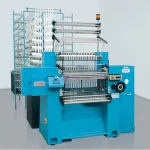Most detergents, cosmetics, and clothes, to name just a few products, are manufactured using petroleum, making such everyday items anything but eco-friendly. It is now possible to produce the bio-based and CO2-neutral basic chemicals for such articles with the help of fungi. Fraunhofer research teams are developing fermentation techniques and manufacturing processes to produce them on an industrial scale.
|
Laboratory-scale bioreactor for optimizing fermentation conditions © Fraunhofer CBP |
Fermentation cascade of bioreactors with volumes of 10 liters to 10 m3 at the Fraunhofer Center for Chemical-Biotechnological Processes in Leuna, Germany. © Fraunhofer IGB |
If you find a layer of blue-green mold covering your bread, fruit or something else from your pantry, you’ll quite rightly end up throwing it out with the garbage – fungi are after all harmful to your health. Researchers at the Fraunhofer Institute for Interfacial Engineering and Biotechnology IGB in Stuttgart, however, are particularly keen on molds, and in particular the genus Aspergillus. They’re also enthusiastic about yeast and smut fungi. Why? “Fungi have long been indispensable for antibiotic production or in the food industry. The fungi we employ help us to synthesize a variety of chemicals in a CO2-neutral way. They’re the basis for detergents, emulsifiers, cosmetics and pharmaceuticals, pesticides, and plastics,” says Prof. Steffen Rupp, deputy director of Fraunhofer IGB and head of the Department of Molecular Biotechnology.
In contrast to petroleum, extracting chemicals from renewable raw materials doesn’t release CO2 into the atmosphere. And using fungi as production organisms has another major advantage: The pool of potential production organisms is almost inexhaustible, as is the range of renewable raw materials they can convert. As the fungi employ a host of different metabolic pathways, they produce an astonishing variety of products, which can be used in a wide range of applications.
From malic acid to bio-surfactants and polyesters
Researchers at Fraunhofer IGB produce a wide variety of chemicals using fungi. One example is malic acid. There is a continually growing market for the substance, which gives products such as jams and juices a sour taste and improves the shelf life of baked goods. It can also be used as a building block for bio-based polyesters. And, in a process similar to brewing beer, it can be produced using molds. In beer brewing, the yeast ferments the malt sugar of the barley, while in malic acid production Aspergillus fungi convert sugar or vegetable oils.
This can be done by “feeding”, for instance, a wood-based sugar solution to the fungi to get them to generate malic acid. Fermentation like this works well on a laboratory scale. The IGB researchers are currently investigating ways to scale up the process for commercialization, in particular, by improving the fermentation yield.

Using a similar process, they can also create surface-active agents that can be used to produce detergents, emulsifiers, active ingredients for cosmetics, pharmaceutics, and pesticides. That’s where the smut fungi come into play. They’re parasites that infest plants, making them look like they’ve been burned – hence their Germanic name, Brandpilze [burnt fungi]. “The process is another one we’re actively developing for industrial production. Our principal goal is to optimize the composition of the biosurfactants we produce to suit various applications in the field of detergents and emulsifiers,” explains Dr. Susanne Zibek, head of the Industrial Biotechnology Group.
Yeasts are also interesting producers. In addition to brewing beer, as previously mentioned, certain yeasts can also be used to produce molecules that are essential for synthesizing novel plastics, such as long-chain dicarboxylic acids. The researchers at Fraunhofer IGB have succeeded in working out a process to produce long-chain dicarboxylic acids from a strain of Candida.
Scaling up: the Fraunhofer pilot plant and biorefinery
If the bio-based chemicals are to be used in industrial applications – whether as surfactants, as food components such as malic acid, or as molecular building blocks for plastics – they’ll need to be synthesized on a large scale. This is a daunting challenge: the worldwide production of surfactants, for instance, is 18 million metric tons per year. “Scaling-up the processes from kilograms to tons involves a great deal of engineering and computing,” explains Zibek. There are still questions that need to be answered: How do we perfect the composition of the fermentation media? What’s the best way to feed the fungi? Fraunhofer Researchers are initially addressing such questions on a small scale.
Dr. Susanne Zibek, head of the Industrial Biotechnology Group
Once this hurdle has been cleared, the researchers at the Fraunhofer Center for Chemical-Biotechnological Processes CBP will then need to establish the processes for large-scale production. They operate a pilot plant in which the fermentation processes can be scaled up to a maximum of ten cubic meters. Such a huge volume requires an enormous amount of raw materials; after all, the fungi need feeding. The preferred source for the scientists is wood sugar, in other words, sugar solutions that contain both glucose and xylose. These can be obtained directly in the Fraunhofer CBP ligno-cellulose biorefinery and mixed into the culture medium.
In turn, this provides the molds and other fungal organisms with optimal growth conditions using renewable raw materials, allowing them to produce tons of chemicals.
The Fraunhofer-Gesellschaft is the leading organization for applied research in Europe. Its research activities are conducted by 72 institutes and research units at locations throughout Germany. The Fraunhofer-Gesellschaft employs a staff of more than 25,000, who work with an annual research budget totaling 2.3 billion euros. Of this sum, almost 2 billion euros is generated through contract research. Around 70 percent of the Fraunhofer-Gesellschaft’s contract research revenue is derived from contracts with industry and from publicly financed research projects. International collaborations with excellent research partners and innovative companies around the world ensure direct access to regions of the greatest importance to present and future scientific progress and economic development.







